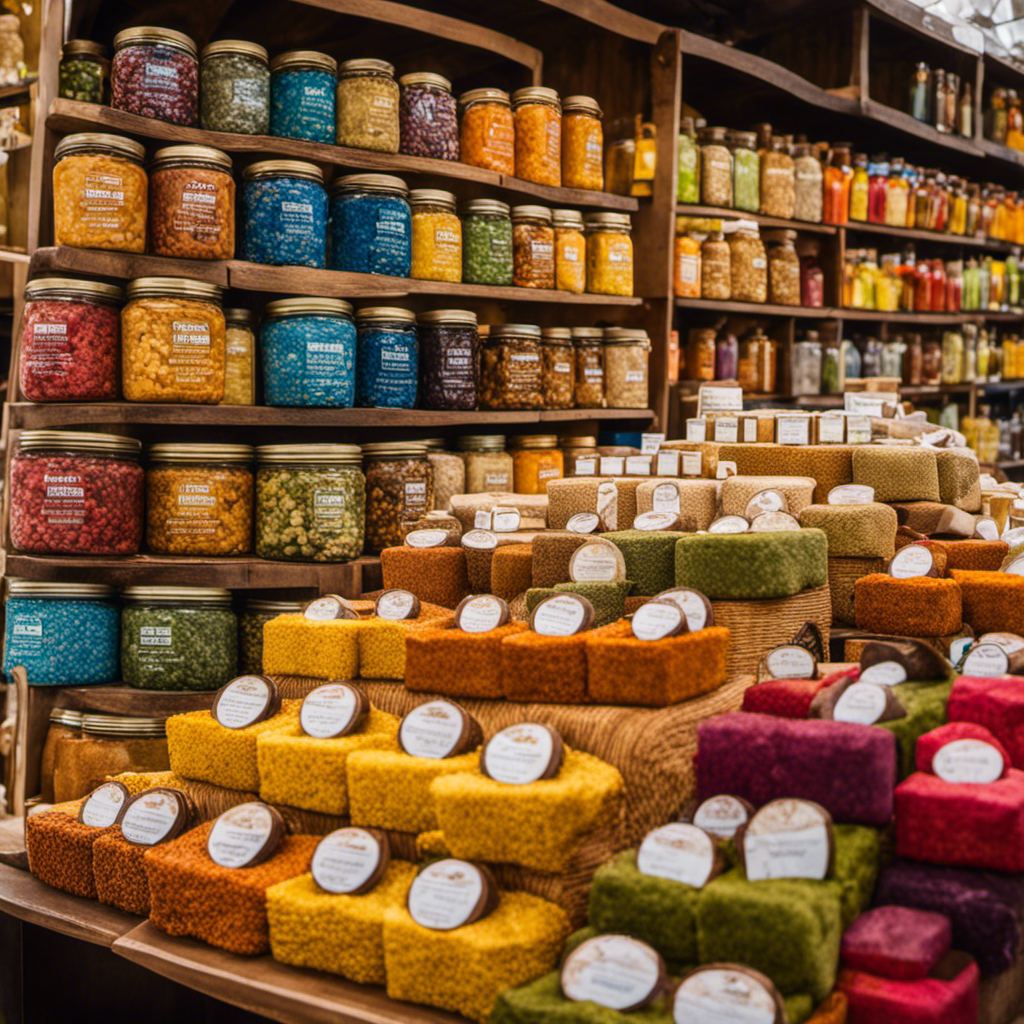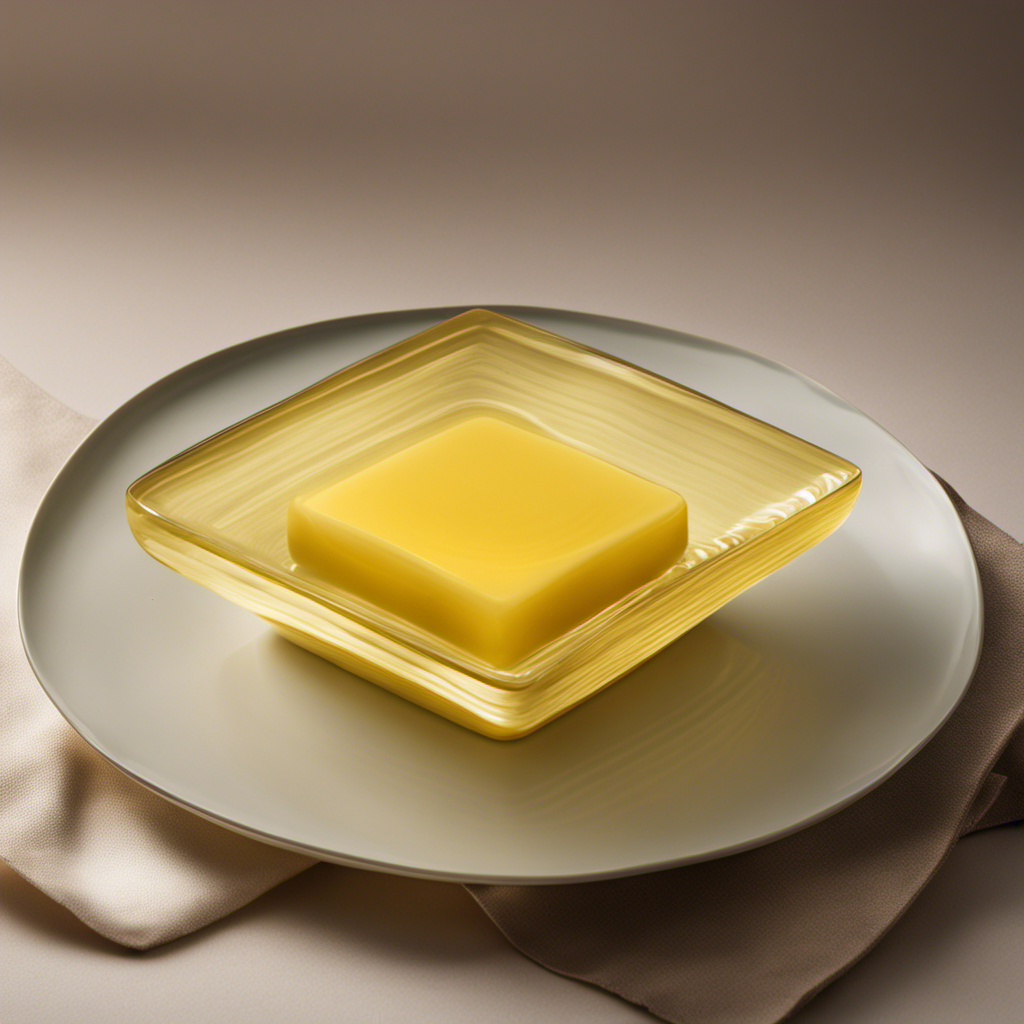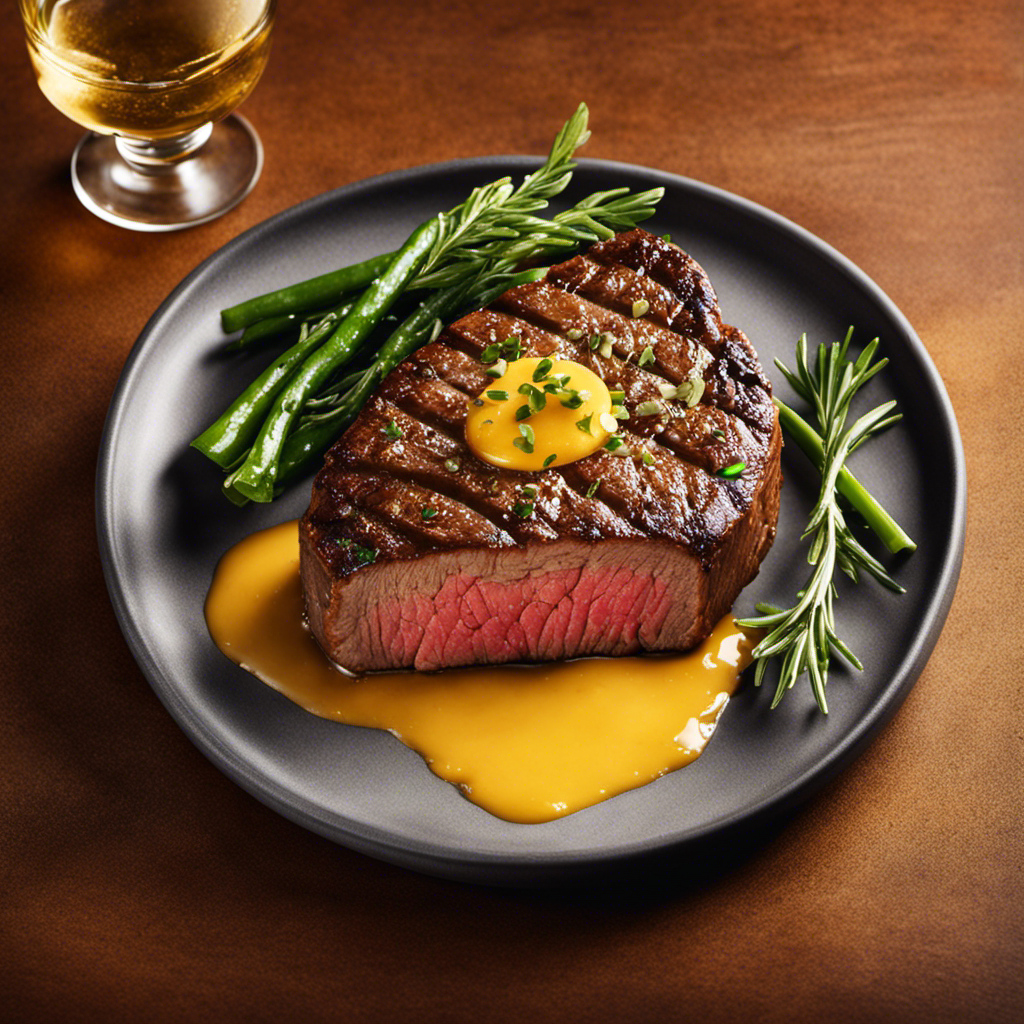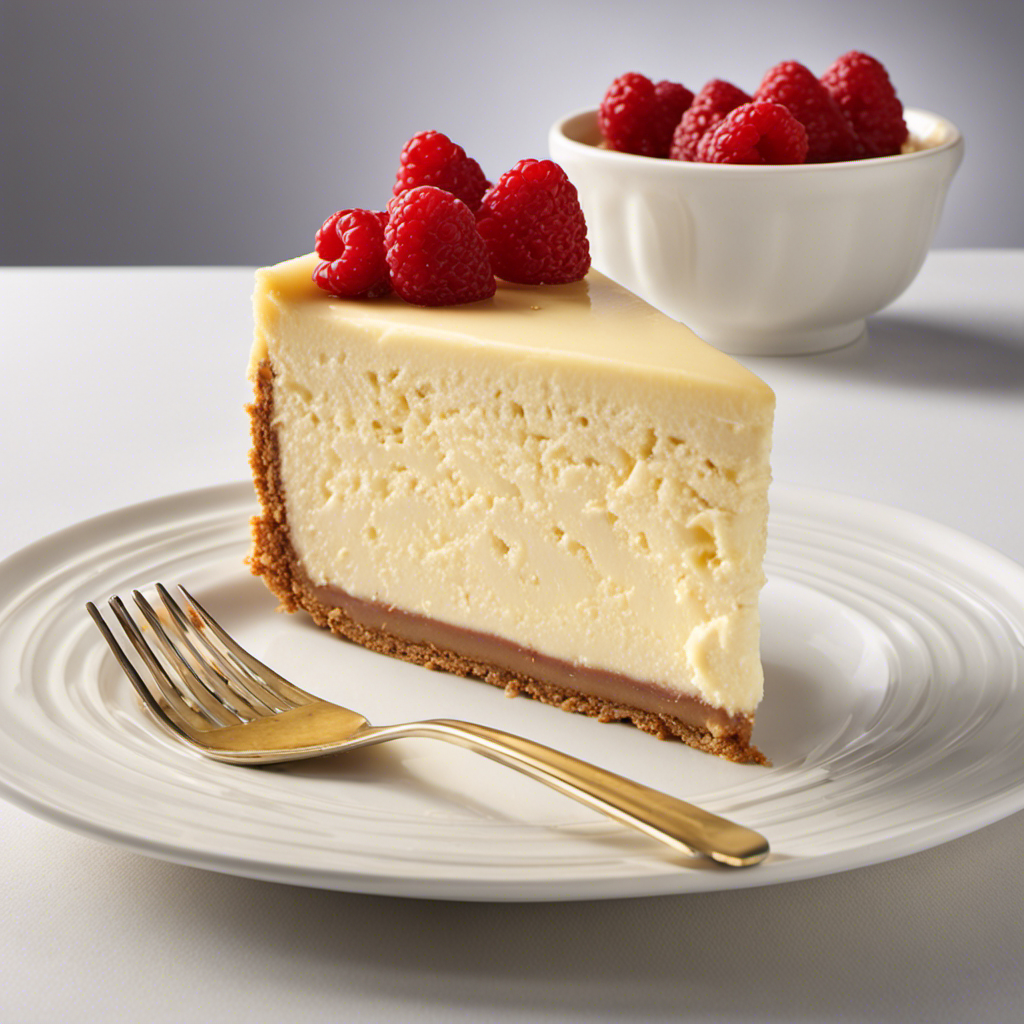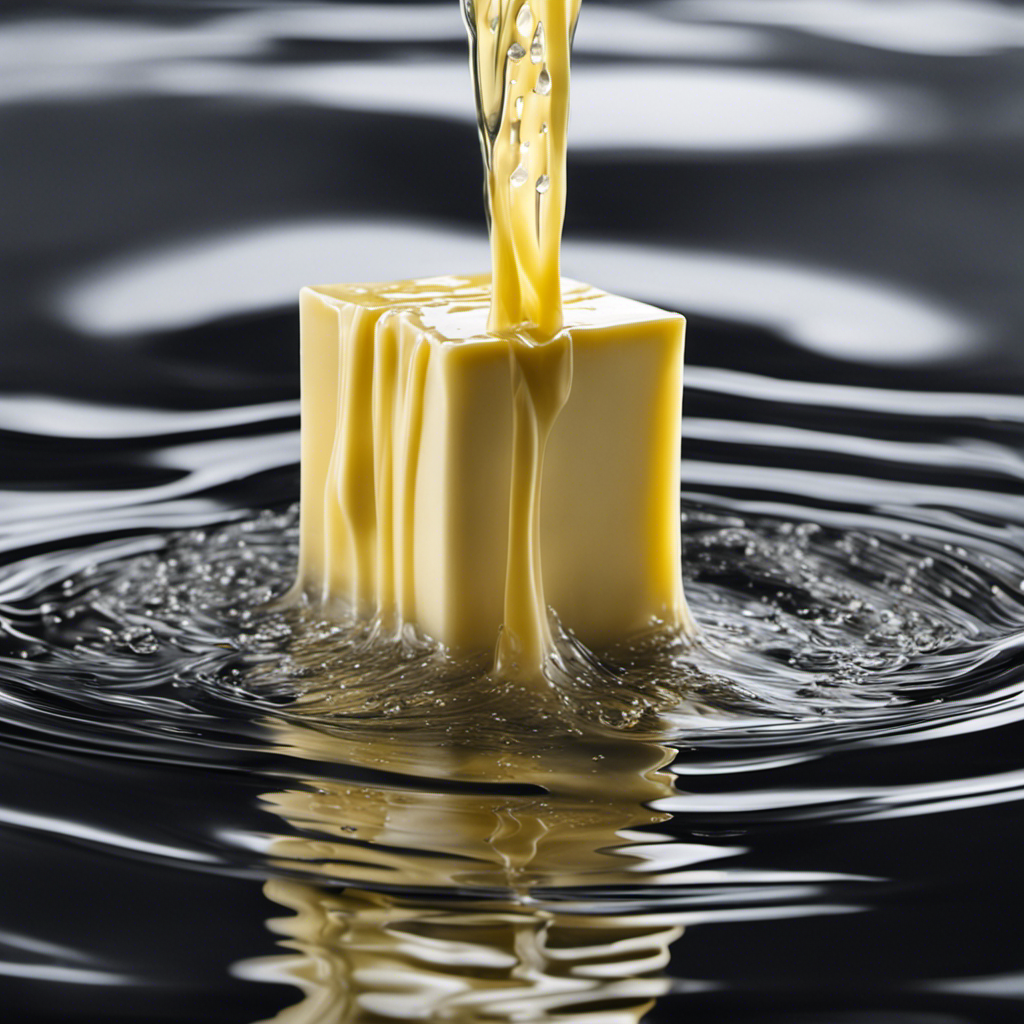Are you in need of top-quality shea butter? Look no further! I have all the inside information on where you can purchase it near you.
From local health and beauty stores to online retailers, I’ll guide you through the best places to get your hands on this natural beauty wonder.
Whether you prefer the convenience of shopping online or love the experience of browsing through an African specialty store, I’ve got you covered.
Let’s dive in and discover the best spots to buy shea butter near you!
Key Takeaways
- Local health and beauty stores, farmers markets, craft fairs, and natural and organic stores are options for purchasing shea butter near me.
- Online retailers and e-commerce websites provide convenience and a wide range of homemade skincare products, including shea butter.
- African and ethnic specialty stores offer cultural authenticity and knowledge about using shea butter effectively.
- Consider price and availability factors, check different online retailers for the best price, and explore DIY shea butter recipes for various skincare purposes.
Local Health and Beauty Stores
You can find shea butter at local health and beauty stores near you. These stores are a great place to start when looking for high-quality shea butter products.
Local boutiques and specialty stores often carry a wide range of skincare products, including shea butter-based ones. These stores usually have knowledgeable staff who can guide you in choosing the right shea butter product for your needs. They may also offer samples or testers for you to try before making a purchase.
Additionally, these stores often source their products from reputable brands and suppliers, ensuring that you are getting authentic and pure shea butter.
Farmers Markets and Craft Fairs
Visiting local farmers markets and craft fairs is a great way to find vendors selling homemade skincare products. These events are filled with small businesses and artisans who take pride in creating their own high-quality products.
Farmers market vendors often offer a wide range of handmade skincare items, from soaps and lotions to scrubs and balms. These products are typically made with natural ingredients like shea butter, essential oils, and botanical extracts.
When you buy from these vendors, you can be confident that you are supporting local businesses and using products that are free from harsh chemicals and additives. Plus, you have the opportunity to talk directly with the vendors, learn about their processes, and even request custom-made products tailored to your specific skincare needs.
Online Retailers and E-commerce Websites
With the rise of online retailers and e-commerce websites, it’s easier than ever to find a wide selection of homemade skincare products. As a skincare enthusiast, I have found that purchasing skincare products online offers a multitude of benefits. Here are three reasons why online retailers and e-commerce websites are a great place to find homemade skincare products:
-
Extensive product selection: Online retailers and e-commerce websites offer a vast array of homemade skincare products, allowing you to explore different brands, ingredients, and formulations. This wide selection ensures that you can find the perfect product for your specific skincare needs.
-
Online reviews: One of the advantages of shopping online is the ability to read online reviews from other customers. These reviews provide valuable insights into the effectiveness and quality of the skincare products you are considering. By leveraging the experiences of others, you can make informed decisions and choose products that have received positive feedback.
-
Customer testimonials: In addition to online reviews, many online retailers and e-commerce websites feature customer testimonials. These testimonials often include before and after pictures, showcasing the transformative results that customers have experienced with the products. Customer testimonials serve as proof of the product’s efficacy and can help you trust the brand and its offerings.
Overall, online retailers and e-commerce websites offer convenience, a wide product selection, and valuable feedback from other customers through online reviews and customer testimonials. This makes them an excellent choice for finding high-quality homemade skincare products.
Natural and Organic Stores
When it comes to finding natural and organic products, exploring local store options can be a great way to discover new brands and support small businesses.
In addition to local stores, online purchasing alternatives offer convenience and a wider selection of products.
However, it’s important to consider the price and availability of these products.
Local stores may have higher prices but immediate access, while online retailers may offer lower prices but longer shipping times.
Local Store Options
You can find shea butter at nearby stores. When it comes to purchasing this natural and nourishing product, there are a few options to consider. Here are three places where you can find shea butter:
-
Local Farmers Markets: These markets are a great place to discover handmade and organic products. Many local farmers and artisans sell their own shea butter products, ensuring high quality and supporting the community. Take a stroll through your local farmers market to find a wide range of shea butter options, from raw and unrefined to scented and whipped.
-
Specialty Boutiques: These small, independent stores often focus on unique and natural products. Look for specialty boutiques that specialize in skincare or natural beauty products. They are more likely to carry a variety of shea butter products, including creams, lotions, and balms. The knowledgeable staff can also provide recommendations based on your specific skincare needs.
-
Online Retailers: If you prefer the convenience of online shopping, there are numerous websites that offer shea butter products. Look for reputable online retailers that specialize in natural and organic skincare. Read reviews and check the ingredients list to ensure you are purchasing a high-quality product.
With these options, you can easily find shea butter products that suit your preferences and support local businesses.
Online Purchasing Alternatives
One option for purchasing shea butter is to explore online retailers that specialize in natural and organic skincare. These retailers offer a wide variety of shea butter products, making it easy to find the perfect option for your skincare needs.
The benefits of using shea butter for skincare are numerous. It is known for its moisturizing properties, making it ideal for dry or sensitive skin. Shea butter is also rich in vitamins A and E, which help to nourish and protect the skin. Additionally, shea butter has anti-inflammatory and anti-aging properties, making it a great addition to any skincare routine.
When purchasing shea butter online, you can find different types such as raw shea butter, refined shea butter, and whipped shea butter, each with its own unique uses. Raw shea butter is unprocessed and retains all of its natural nutrients, while refined shea butter has been filtered to remove impurities. Whipped shea butter is lighter in texture and perfect for easy application.
Price and Availability
To find the best price and availability, check out different online retailers that specialize in natural and organic skincare products. These retailers often offer a wide range of shea butter products, giving you plenty of options to choose from.
Here are three reasons why checking online is a great idea:
-
Competitive Pricing: Online retailers often have lower overhead costs compared to physical stores, allowing them to offer better prices on shea butter products. By shopping online, you can take advantage of these competitive prices and save money on your purchase.
-
Wide Selection: Online retailers that specialize in natural and organic skincare products usually have a vast selection of shea butter brands and variations. This gives you the opportunity to explore different options and find the best shea butter product that suits your specific needs and preferences.
-
Convenience: Shopping online provides the convenience of browsing and purchasing shea butter products from the comfort of your own home. You can easily compare prices, read reviews, and make an informed decision without having to visit multiple physical stores.
Beauty Salons and Spas
When it comes to finding nearby shea butter retailers, it’s important to consider both the quality and pricing options. As someone who has a passion for skincare and natural products, I have done extensive research on this topic.
In this discussion, I will share my knowledge and insights on where to find the best shea butter, what to look for in terms of quality, and how to find the best pricing options.
Nearby Shea Butter Retailers
There’s a store just a few blocks away that sells shea butter. It’s called ‘The Natural Beauty Boutique’ and it’s one of my favorite local skincare boutiques. They have a wide selection of natural and organic products, including shea butter from different regions around the world.
The store is cozy and inviting, with knowledgeable staff who are always willing to help you find the perfect skincare products for your needs. The shea butter they sell is high quality and can be used in a variety of DIY shea butter recipes.
Here are three of my favorite recipes that you can try at home:
-
Shea Butter Body Butter: Mix shea butter with coconut oil and a few drops of your favorite essential oil. Whip it together until it becomes light and fluffy. Apply it all over your body for moisturized and nourished skin.
-
Shea Butter Lip Balm: Melt shea butter with beeswax and coconut oil. Add a few drops of peppermint essential oil for a refreshing scent. Pour the mixture into lip balm tubes and let it cool. Apply it to your lips whenever they need some extra hydration.
-
Shea Butter Hair Mask: Mix shea butter with honey and olive oil. Apply the mixture to your hair, focusing on the ends. Leave it on for about 30 minutes, then rinse it out with warm water. Your hair will be left soft, shiny, and moisturized.
Next time you’re in the area, make sure to stop by ‘The Natural Beauty Boutique’ to get your shea butter fix and explore their other amazing skincare products.
Quality and Pricing Options
After exploring nearby shea butter retailers, let’s now discuss the quality and pricing options available.
Shea butter is known for its numerous benefits for the skin and hair. It is rich in vitamins A and E, which help to moisturize and nourish the skin, leaving it soft and supple. Additionally, shea butter has anti-inflammatory and healing properties, making it an excellent choice for soothing dry, irritated skin or treating conditions like eczema or psoriasis.
When it comes to the production process, shea butter is derived from the nuts of the shea tree, which are then crushed, roasted, and ground into a paste. The paste is then whipped and kneaded to separate the oils, resulting in the creamy shea butter we all know and love.
In terms of pricing, shea butter can vary depending on factors such as purity, source, and brand. It’s important to consider these factors when purchasing shea butter to ensure you’re getting a high-quality product that will deliver the desired benefits for your skin and hair.
African and Ethnic Specialty Stores
You can find African and Ethnic specialty stores that sell shea butter near you. These stores cater to individuals who are looking for authentic and high-quality products. Here are three reasons why you should consider purchasing shea butter from these stores:
-
Wide Variety of Options: African and Ethnic specialty stores offer a wide range of shea butter products. They stock different brands and variations, including raw, unrefined, and scented shea butter. This allows you to choose the type that suits your specific needs and preferences.
-
Cultural Authenticity: These stores specialize in African and Ethnic products, which ensures the authenticity of the shea butter they sell. They often source their shea butter directly from Africa, where it is traditionally produced. This guarantees that you are getting a genuine product that has been used for centuries in African beauty rituals.
-
Knowledgeable Staff: The staff at African and Ethnic specialty stores are usually well-informed about shea butter and its benefits. They can provide valuable advice on how to use it effectively for various purposes, such as moisturizing the skin, soothing inflammation, or nourishing the hair. Their expertise ensures that you make an informed decision and get the most out of your shea butter purchase.
Next, we will explore another option for purchasing shea butter near you – local health and beauty stores.
Frequently Asked Questions
How Can I Determine the Quality of Shea Butter Before Purchasing It From a Local Health and Beauty Store?
Before purchasing shea butter, I determine its quality by looking for certain signs. I check for a creamy texture, a nutty aroma, and a light yellow color. These indicators help me ensure that I’m buying high-quality shea butter.
Are There Any Specific Farmers Markets or Craft Fairs Known for Selling High-Quality Shea Butter Near Me?
Craft fairs and local farmers markets often have high-quality shea butter available. These events are known for offering a wide range of natural products, including shea butter. It’s worth checking them out for your shea butter needs.
What Are Some Reputable Online Retailers or E-Commerce Websites Where I Can Buy Shea Butter?
There are numerous reputable online retailers and e-commerce websites where you can purchase different types of shea butter products. They offer a wide range of options and provide helpful tips for using shea butter for skincare.
Do Natural and Organic Stores Typically Offer a Wider Variety of Shea Butter Products Compared to Other Stores?
Yes, natural and organic stores often offer a wider variety of shea butter products compared to other stores. However, grocery stores and local pharmacies may also carry shea butter products, providing more options for consumers.
Are There Any Specific African or Ethnic Specialty Stores in My Area That Are Known for Having a Wide Selection of Shea Butter Products?
There are some amazing African markets and ethnic beauty stores in my area that are known for their wide selection of shea butter products. It’s a treasure trove of natural beauty goodness!
Conclusion
In conclusion, finding shea butter near you is easier than you think. Local health and beauty stores, farmers markets, online retailers, natural and organic stores, beauty salons, and African and ethnic specialty stores are all great places to start your search.
For example, Sarah, a skincare enthusiast, was amazed to discover a hidden gem at her local farmers market. She found a small vendor selling handmade shea butter products that completely transformed her dry, flaky skin.
So don’t hesitate to explore these options and experience the wonders of shea butter for yourself.
